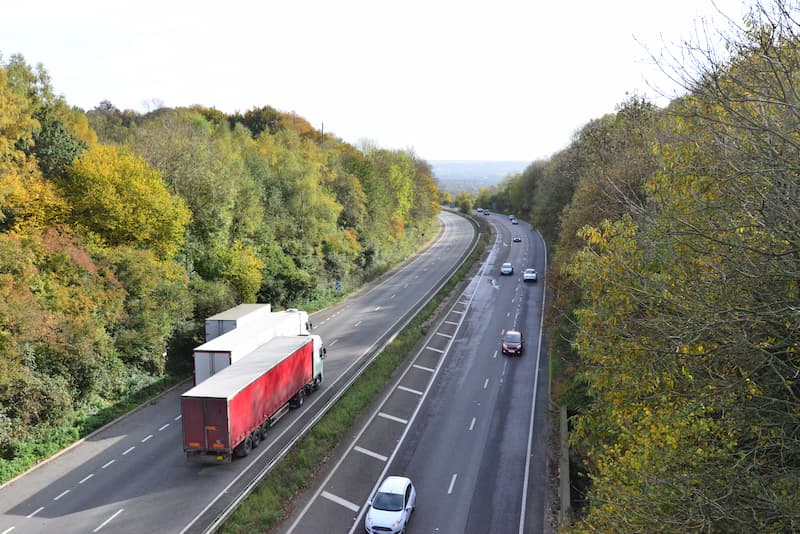Fleet Optimisation to Save Fuel
Fuel is the most vital resource for any haulage or transport fleet and must be monitored carefully by all fleet managers. Investing in on-site fuel tanks and buying wholesale can improve a fleet’s ability to acquire fuel at reduced prices. Still, those gains can be easily lost through inefficient driving or inadequate equipment.
Promoting Eco-Driving
Eco-driving is a driving style that promotes lowering fuel consumption, lowering accident rates and cutting carbon emissions. Unfortunately, saving on fuel costs is not usually solved by fixing one problem. The most effective way of reducing these expenses is by improving a lot of minor elements and allowing their individual benefits to accumulate into more significant gains. Eco-driving is a collection of techniques that, individually, won’t seem to make a substantial impact but together will ensure your fuel is used more efficiently.
The core elements of eco-driving are:
- Driving smoothly – Drivers are encouraged to anticipate changes in the ebb and flow of public traffic and avoid any dramatic braking or acceleration, unless necessary, for the safety of road users. More gradual speed changes will increase fuel efficiency.
- Limit accelerator use – When approaching a downhill area, drivers are encouraged to remain in gear but remove their foot off the accelerator at the earliest safe opportunity. This activates a fuel cut-off switch for many vehicles and prevents fuel usage until the accelerator is used again.
- Avoid Excess speed – this is related to the previous two elements. Higher speeds significantly increase fuel usage and will inevitably lead to more brutal breaking and not smooth driving.
Fuel Efficient Driving Monitoring
Efficient driving is one of the most significant ways to save fuel expenses. This can be achieved by monitoring driver performance with telematics technology monitoring activity and odometer readings.
To get the most out of your accumulated telematics data, you need to create a baseline before the start of a job. For example, every time a vehicle is refuelled, the following data should be noted:
- Date of the refuelling and the vehicle registration
- Driver name
- Amount of fuel taken
- Previous journeys telematic readings and odometers readings
By committing to a program that includes a fuel monitoring system and analysing their previous journeys, you can compare them to more recent trips and reveal any negative trends. You can quickly diagnose a driver’s performance progression regarding fuel consumption, address negatives, and reward positive results. This data will create a clear path from the purchase of wholesale fuel to its use and by which member of your team and reveal where it’s being used inefficiently. By ensuring that your fleet drivers are using their fuel efficiently, you can more easily predict fuel consumption and future costs and prevent unexpected increases.
Driver Refresher Training
Driver refresher training is a significant investment to improve your fleet’s fuel costs but one that will yield many benefits. High-performance metrics and refresher training go hand in hand as tangible ways to achieve this goal.
The logic behind this is that bad habits can build up amongst drivers leading to potentially costly and unsafe working practices. For example, vehicle idling increases consumption unproductively. This may seem like a slight increase at first, but over time as these habits increase in frequency, it will escalate to a significant amount of fuel being wasted across your fleet. Driver refresher training is helpful for also maintaining your drivers’ health and safety when working on public roads. These driver training programs are an excellent tool for ensuring your drivers conduct their work safely and productively.
Calculating MPGs
Knowing as much about your fuel as possible will help you manage costs and find ways of lowering them. Using the previously mentioned techniques of monitoring fuel consumption, you can calculate your vehicle’s miles per gallon (MPG). This can be achieved by monitoring specific elements of the individual vehicle’s operation every month:
- Review the previous monthly and quarterly MPG
- Review the percentage of the manufacturer’s combined figure stated for this vehicle.
- Note the average pence per mile (PPM) monthly, quarterly and yearly.
- Compare this MPG with the whole fleet’s average
- Exceptions where the driver’s MPG is a significant amount lower than the manufacturer’s MPG
These metrics will become increasingly helpful as you build a more detailed picture of the financial costs of your driver or vehicle’s performance.
Importance Of Vehicle Maintenance
Effective maintenance across your fleet will ensure your vehicles are in their best operation state and improve fuel efficiency. Daily Vehicle Inspection Reports (DVIR) are a tangible tool within this metric that enables fleet managers to monitor the condition of their vital vehicles accurately and conduct effective preventative maintenance when necessary.
Keeping these assets in their best working condition is essential for fuel efficiency as inefficient engines will use more fuel than engines in perfect working order. In combination with maintenance metrics, preventive maintenance will ensure that your vehicles won’t let you down and increase your fuel costs.
At Fueltek, we have many years of experience providing adequate fuel management systems to a broad range of companies across the UK. Browse our catalogue to discover what we could supply to help your fleet.











